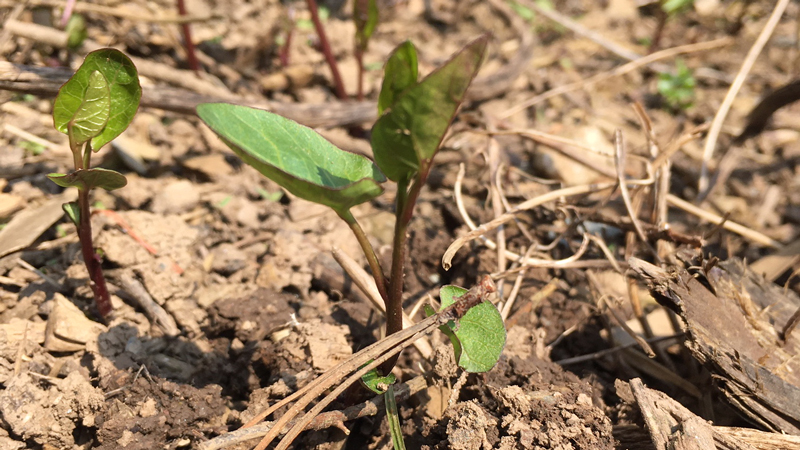I spent most of this afternoon digging up a LOT of bindweed from one of my raised beds. I seem to have been blessed with a plot that is full of tough and persistent weeds… bindweed, dock leaves, dandelions, creeping buttercup (which is so pretty, but so annoying!), brambles (love the blackberries, but not a huge fan of the thorns) and stinging nettles. I also have butterbur and bamboo creeping in from the other side of the fence.
Over time, the weed population in my veg plot has lessened, particularly in the older beds that I put in 4 or 5 years ago. However, in the newer beds that I added 2 years ago, they are still a problem. As I was pulling them up I mulled over how I’ve been controlling the weed population and that it would be a good thing to share this spring as more and more people are starting to grow their own.
Firstly I cover the raised bed with black polythene for a few weeks – this makes any of the weaker rooted weeds die back so that I can clearly see where there are tougher weeds.
Then there is digging. I carefully dig up and remove as many roots as I can find. This is best done when the soil is quite damp so that it’s easier to dig. To minimise disturbance to the soil I prefer to do this with a small handfork – that way I can be quite precise. All the weeds I’ve mentioned, except nettles, have strong, thick and deep roots. Nettles are more feathery and break easily. In all cases, digging them carefully and trying to pull up as much of the root as possible without breaking them is key. I put all the roots into a bucket and let them dry out a bit before throwing them onto a bonfire at some stage.
After that, I mulch. I often add a layer of cardboard and then cover with a 10cm thick layer of compost (part of the no-dig method – see below). This blocks as much light as possible suppressing the weeds from growing back. They will still make it through, but they will be weakened.
Through the growing season, whenever I see a new shoot coming through, I carefully use the hand fork to dig it up and pull it out, getting as much of the root as possible, but disturbing the soil as little as possible. I do this more or less weekly, sometimes more often. Without getting a chance to grow, the roots under ground become weaker. Meanwhile, regular hoeing keeps other weeds under control.
At the end of the season, I cover the bed again with black polythene. Come spring, I peel back the polythene, dig up any visible persistent weeds, mulch and then I’m ready for another growing season. It may seem like a lot of effort, but apart from that initial dig in early spring, the work involved is quite minimal, and over the course of several years the number of weeds drastically reduces to a point where the roots have fully weakened and you barely need to do anything to keep on top of them all.

